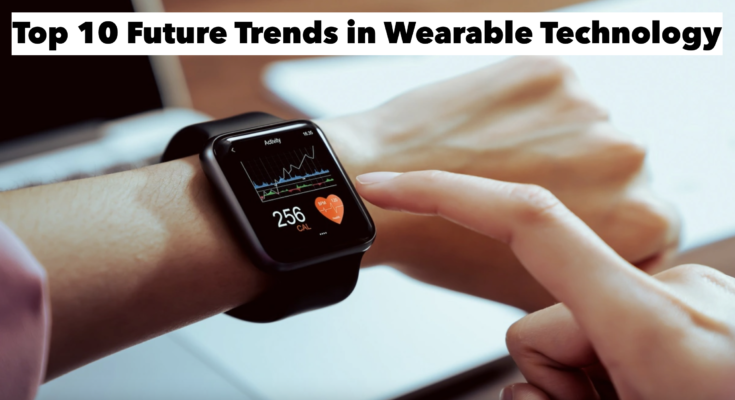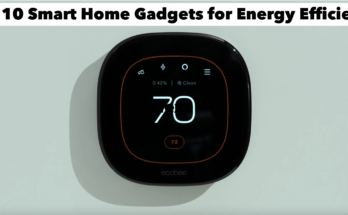Wearable technology has come a long way since the introduction of fitness trackers and smartwatches. Going forward, the integration of advanced technologies such as artificial intelligence (AI), the Internet of Things (IoT), and health monitoring will revolutionize the way we interact with our devices and the world around us. Here are the top 10 future trends in wearable technology that are expected to shape the landscape for the next few years.
1. Advanced health monitoring
One of the most significant trends in wearable technology is the advancement of health monitoring capabilities. Devices are evolving from simple pedometers to advanced health monitors that can monitor vital signs such as heart rate, blood pressure, oxygen saturation, and even blood glucose levels. Sensor-equipped wearables enable continuous health monitoring, helping to detect potential health issues early and providing personalized health insights.
Future impact:
Remote patient monitoring will become commonplace, reducing the need for in-person hospital visits.
Personalized health plans can be created based on real-time data collected by wearables.
2. Integration with AI
Artificial intelligence will play a central role in the future of wearable technology. AI algorithms will analyze the vast amounts of data collected by wearable devices and provide personalized recommendations, alerts, and insights to users. For example, AI can help users understand their fitness patterns, predict health issues, and provide customized advice on diet and exercise.
Future impact:
Improved decision-making in managing users’ health and well-being.
AI-powered chatbots on wearable devices can provide instant health advice and support.
3. Augmented Reality (AR) Capabilities
Augmented reality is revolutionizing the way wearables interact with the environment. Devices like smart glasses overlay digital information onto the physical world, improving user experience in areas ranging from navigation to gaming to education.
Future Impact:
AR-enabled wearables can provide real-time information for a variety of tasks, such as: B. Hands-free navigation or remote support for repairs. Industries like education and training can use AR wearables to create immersive learning experiences.
4. Increased Connectivity with 5G
The introduction of 5G technology will have a significant impact on the capabilities and performance of wearable devices. Faster data transfer speeds and reduced latency will enable wearable devices to communicate more efficiently with other devices and the cloud, enabling real-time data processing and updates.
Future Impact:
Wearable devices will support more complex applications and services such as: B. Live streaming of health data to healthcare providers. Improved capabilities in urban environments will enable real-time interaction with smart city infrastructure.
5. Increased Attention to Mental Health
As awareness of mental health grows, wearable technology will become increasingly focused on monitoring and supporting mental health. Devices that track stress levels, sleep patterns, and mood are becoming increasingly popular as they provide users with insight into their mental health and suggest ways to cope.
Future impact:
Integrate mental health resources, such as guided meditations and stress management techniques, into wearable devices. Real-time mood tracking could provide early warning of a potential mental health crisis.
6. Smart Fabrics and Textiles
The development of smart fabrics and textiles is an exciting trend in wearable technology. These materials can be embedded with sensors and electronics, allowing clothing to monitor various health metrics and adapt to changes in the environment.
Future impact:
Clothing could potentially monitor posture, muscle activity, and other health metrics in real time. Athletes could benefit from clothing that provides feedback on performance and recovery.
7. Fashionable Wearables
As wearable technology becomes more integrated into everyday life, fashion and aesthetics will play a key role. Designers will increasingly focus on creating stylish wearable products that appeal to consumers’ fashion sense without sacrificing functionality.
Future impact:
Wearables that fit seamlessly into everyday outfits, encouraging wider adoption among non-tech-savvy people. Tech companies and fashion brands will collaborate to develop limited edition wearables.
8. Biometric authentication
As wearable devices continue to collect sensitive personal data, security will remain a key issue. Biometric authentication methods such as fingerprint scanning, facial recognition, and voice recognition will become increasingly common in wearable devices, improving user privacy and data security.
Future impact:
Wearable devices will become more trustworthy, enabling secure transactions and data storage. Wearable devices could act as secure keys for smart homes and vehicles.
9. Sustainable and eco-friendly design
As environmental awareness grows, there will be a growing demand for sustainable and eco-friendly wearable technology. Companies are developing wearable devices using sustainable materials and working to ensure that the devices have a minimal environmental footprint.
Future impact:
Wearables that can be recycled or reused are becoming increasingly common. Environmentally conscious consumers will encourage brands to adopt sustainable practices in production.
10. Gamification of Health and Fitness
Gamification is a trend that is here to stay in wearable technology, motivating users to be more proactive towards their health and fitness goals. Wearable devices can make fitness more fun and exciting by incorporating game-like elements such as rewards, challenges, and social sharing.
Future impact:
Increased user engagement with fitness routines, leading to improved health outcomes.
Community-building capabilities that foster a sense of ownership and support among users.
Conclusion:
The future of wearable technology is bright, with advancements improving our daily lives in countless ways. From advanced health monitoring to the integration of AI and AR, the next generation of wearable devices will not only monitor our physical health, but also support our mental health and promote sustainable lifestyles. As these technologies evolve, we expect to see wearable devices become more deeply integrated into our daily lives, ultimately reshaping how we interact with technology and improving our overall quality of life. Whether it’s health, fitness, fashion, or sustainability, the possibilities are endless, paving the way for a more connected and informed society.



